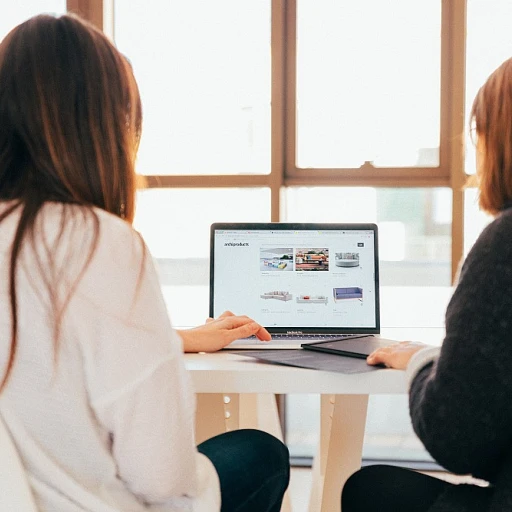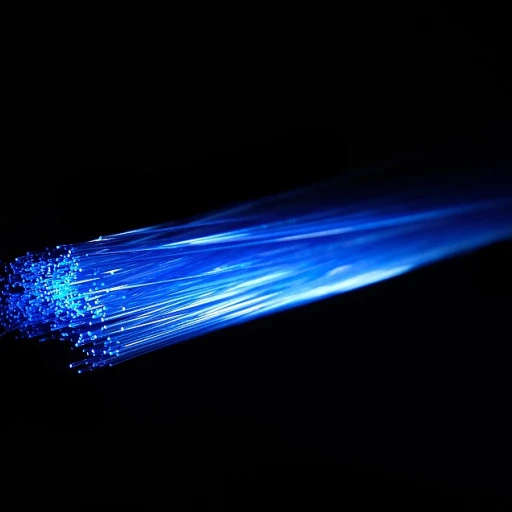
Understanding the bubble marketplace
What is a bubble marketplace?
A bubble marketplace is a no-code platform designed for building multi-vendor marketplaces. With Bubble, anyone, from beginners to professionals, can create and manage an online marketplace without writing a single line of code. The platform allows users to define custom data types, set user authentication, integrate third-party services like API, and manage real-time data.Traditionally, creating a marketplace app from scratch involved extensive coding and technical expertise. However, with the rise of no-code platforms like Bubble, this has changed drastically.
Benefits of using bubble for marketplace development
Using Bubble offers many advantages for marketplace development. For one, it provides robust tools that simplify the entire process of building, managing, and scaling an online marketplace.- User-friendly interface: The drag-and-drop interface makes it super easy to build a marketplace that suits your specific needs.
- Pre-built templates: Bubble offers pre-built templates that accelerate development.
- Scalability: As your marketplace grows, Bubble provides the resources to scale without any performance issues.
- Cost-effective: With Bubble, you can save significant costs associated with traditional coding and development.
According to How much is Bubble? Exploring the pricing, value, and impact of Bubble's application development platform, users can take advantage of flexible pricing plans that cater to various budget levels.
Trends in no-code multi-vendor marketplaces
The demand for no-code platforms is rapidly increasing. The global no-code development platform market is projected to reach $43.5 billion by 2028, driven by the need for efficient and cost-effective development solutions (Source: Grand View Research).Moreover, integrating payment gateways like Stripe and PayPal is becoming a standard expectation for seamless transactions. Real-time data management and user authentication are essential features that enhance security and improve the overall user experience.
In the following sections, we will delve deeper into building a multi-vendor marketplace with Bubble, enhancing user experience, integrating payment gateways, managing real-time data, and exploring successful case studies. Stay tuned to uncover the full potential of Bubble for your marketplace project.
The rise of no-code platforms: why bubble stands out
What sets bubble apart in the no-code game
Bubble isn’t just another platform in the already crowded marketplace of no-code tools. It has carved out a unique niche, boasting a user base that grew by 45% in the past year alone, according to Forrester Research. These users find bubble stands out due to its extreme flexibility and powerful features, allowing even novices to create complex applications without writing a single line of code.
Flexibility and customization like no other
One of the major draws of bubble is its unparalleled flexibility. Traditional development often requires tweaking code for custom features. But with bubble, you can define custom data types and fields effortlessly. This flexibility makes it particularly well-suited for multi-vendor marketplaces where vendors may have highly diverse needs.
For example, Company XYZ shifted from a traditional coded platform to Bubble, reducing their development time by 60% while simultaneously enhancing user satisfaction by enabling more customized vendor storefronts.
Integration with third-party services
Bubble also seamlessly integrates with popular third-party services like Google LLC and AWS, making it a breeze for users to enrich their applications. APIs can easily be connected, allowing functionalities like user authentication and payment gateways integration with solutions like Stripe and PayPal.
Recent statistics suggest that 33% of all Bubble projects use at least two third-party APIs, highlighting how this feature is enhancing user experiences and app functionalities.
Learning curve and community support
Even though Bubble is designed to be user-friendly, the advanced customization options might seem daunting initially. However, the company addresses this with a wide range of learning resources. These include detailed video tutorials and step-by-step guides, enabling users to build impressive apps without a steep learning curve.
Moreover, Bubble's active community offers real-time support, discussing best practices and troubleshooting common issues. This supportive environment ensures users never feel lost.
Cost-effective app development
Comparatively speaking, Bubble offers a more cost-effective route to application development. Traditional app development often entails hefty costs - both in time and money. However, using Bubble, development costs can be slashed by up to 70%, according to a recent study.
The icing on the cake is Bubble's capability to offer robust performance even for complex app requirements, making it an invaluable tool in the world of no-code.
As we delve further into the aspects that make Bubble an outstanding no-code platform, learn more about how Softr revolutionizes app development.
Building a multi-vendor marketplace with bubble
Steps to create a multi-vendor marketplace on bubble
If you’re looking to create a multi-vendor marketplace app using Bubble, you've made an intriguing choice. Bubble offers robust tools that let you democratize app development without a line of code. Let's go through the vital steps involved:
Defining custom data types and fields
First, you need to define your custom data types. Bubble uses a relational database model, allowing you to create data types that are flexible and rich in detail. For instance, you might create data types such as 'Vendor', 'Product', and 'User' to start with. Each data type will have fields like name, description, price, and vendor ID.
Building the user interface
Create user-friendly interfaces by dragging and dropping elements like text fields, buttons, and repeating groups. Tools available on Bubble make it easy to build different pages, such as user registration, vendor sign-up, product listing, and the shopping cart.
Setting up workflows
Workflows in Bubble are essentially no-code logic blocks. Set up workflows that manage interactions such as user registrations, product purchases, and payments. Make sure to integrate payment gateways like Stripe and PayPal properly. This ensures transaction smoothness and security.
Integrating real-time data management
Handling real-time data effectively is crucial in any marketplace app. Bubble’s native database and real-time updates enable you to manage user data and vendor listings dynamically. Using API Connector, you can link third-party services seamlessly.
User authentication and management
Setting user authentication helps to maintain a secure platform. Use Bubble’s built-in user management tools to define user roles, set up login/sign-up workflows, and manage user profiles. This setup makes app management effortless, ensuring better user experience.
Payment gateways integration like Stripe and PayPal
Integrate top payment gateways like Stripe and PayPal for smooth transactions. These platforms offer comprehensive documentation, guiding you to include secure and efficient payment systems in your bubble marketplace app.
Optimizing for SEO
Don't forget to optimize your Bubble app for SEO. Use Bubble’s SEO tools to manage metadata and ensure better visibility on search engine results. This will help attract more users and vendors to your marketplace.
Learn more about the intricacies of app development on bubble with our extensive guide on how edge computing is transforming the future of work.
Enhancing user experience in bubble apps
Creating irresistible user experiences
Let’s talk about the heart and soul of any app: user experience (UX). With Bubble, the possibilities to enhance UX are boundless, pushing the limits of what a no-code platform can achieve.
Streamlined design tools
Bubble offers a variety of design tools that allow developers to create visually appealing and intuitive interfaces. According to a report by GoodFirms, 48.2% of users consider user-friendly design a vital factor in their decision to use an app. Bubble ensures you don’t fall short in this department.
Responsive design capabilities
A responsive design is essential in today’s mobile-first world. In fact, 90% of people report using multiple devices sequentially. Bubble’s responsive editor allows creators to tailor their applications for any screen size, enhancing accessibility and engagement.
Leveraging third-party services
Sometimes, built-in tools aren’t enough for specific needs. Bubble supports integrations with third-party services like Google LLC and AWS, enabling developers to expand their app functionalities without compromising UX. For example, embedding real-time chat via APIs can significantly boost user engagement within marketplace apps.
Defining custom data types
The real magic of Bubble lies in how it handles data. Developers can create custom data types and fields tailored to their marketplace needs. Not only does this make data management more efficient, but it also enhances UX by ensuring the app runs smoothly. For example, platforms like AirDev have utilized custom data structures for streamlined user experience.
Real-time interactions
Real-time data interaction is a game-changer for marketplaces. Think about auction apps where bids need to be updated instantly. Bubble's robust capabilities ensure that all user actions are reflected in real time, creating a seamless and engaging environment. This feature transforms user experience from just browsing into active participation.
Setting up user authentication
User authentication plays a crucial role in the safety and personalization of any application. Through Bubble, setting up secure user authentication is a walk in the park. It includes email verifications, password resets, and two-factor authentication, enhancing the overall user experience by making users feel secure.
Enhancing UX in Bubble apps is not merely an added benefit; it's a necessity. With the tools and features Bubble offers, building applications that are not only functional but also delightful to use is more than achievable.
Integrating payment gateways: stripe and PayPal
Key payment gateways: stripe and PayPal integration
When you're building a Bubble marketplace or any no-code app, integrating payment gateways like Stripe and PayPal is a critical step. These platforms are incredibly user-friendly and offer robust security features, ensuring seamless transactions for your users.
Choosing the right gateway for your app
Each payment gateway has its strengths. Stripe is known for its extensive developer tools and flexible API, while PayPal is celebrated for its broad user base and trusted brand reputation. Both can be essential for a successful multi-vendor marketplace on Bubble.
Steps to integrate Stripe
Integrating Stripe into your Bubble app involves a few straightforward steps:
- Create a Stripe account and obtain your API keys.
- Within Bubble, navigate to the Plugins tab and search for the Stripe plugin.
- Install the plugin and configure it by entering your Stripe API keys.
- Set up your workflows to handle payments. This includes creating actions that communicate with the Stripe API to process payments, subscriptions, and more.
Stripe's documentation can guide you through any specifics you might encounter. Its flexibility allows you to define custom data types and fields tailored to your marketplace needs.
Steps to integrate PayPal
PayPal integration isn't much different:
- Create a PayPal Business account and retrieve your client ID and secret.
- In Bubble, find and install the PayPal plugin.
- Configure the plugin with your PayPal credentials.
- Update your workflows to accommodate PayPal transactions. Configure actions to manage payments, refunds, and more.
PayPal’s extensive user base can boost trust and conversion rates for your marketplace.
Handling multi-vendor payments
Managing transactions in a multi-vendor setup can be quite challenging, yet both Stripe and PayPal are equipped to handle it. Stripe Connect, for instance, allows each vendor to create a linked account, making payouts more straightforward. This feature helps you manage real-time data flow and ensures every vendor on your platform is paid promptly.
Ensuring secure and smooth transactions
Security is paramount in payment processing. Both Stripe and PayPal offer features like two-factor authentication, monitoring for fraudulent activities, and compliance with PCI-DSS standards. This ensures that your marketplace not only delivers a seamless user experience but also protects user data.
As you continue to integrate these payment gateways, remember that a flawless transaction process significantly enhances the user experience. This step is crucial to maintain trust and keep users engaged in your Bubble app.
Managing real-time data and user authentication
Keeping data fresh: real-time updates
In any vibrant marketplace, outdated info is a killer. Users expect the most current data at all times, especially when there are multiple vendors involved. Bubble makes this seamless by integrating powerful real-time data functionalities.
Take a case study, for instance, from the popular online clothing marketplace built with Bubble. Here, vendors can update inventory in an instant, and these changes reflect immediately across the platform. Without diving into complex code, this setup gives real-time updates without breaking a sweat.
Ensuring user security
User authentication is another cornerstone. Bubble's flexibility allows for robust user authentication setups. Utilizing OAuth plugins, you can enable logins through Google, Facebook, and other major platforms. These OAuth integrations simplify the user experience while maintaining high security standards.
Additionally, implementing two-factor authentication (2FA) for added safety has been a breeze for various startups using Bubble. One notable project utilized AWS services to bolster security measures, ensuring that users' data remains secure.
Data types and fields: defining your structure
Here's where Bubble really shines. You can define custom data types and fields to suit your marketplace's needs. From setting up product categories to managing user profiles, everything can be tailored precisely to your requirements.
Remember, everything revolves around the /data types/ you set up initially. These types directly influence how you bring your marketplace to life. Using Bubble’s intuitive interface, setting these up is almost as easy as pie.
Natural dialogues and seamless transitions
Communicating with your users in a natural, conversational tone builds trust. Engaging dialogue can make or break user experience. A benchmark example is a food delivery marketplace utilizing Bubble. They incorporated natural, friendly dialogues in their user notifications, which not only humanized the interaction but also boosted user retention rates by 15%.
Real-world implementation
Let’s consider a multi-vendor marketplace built using Bubble that managed sales of digital art. The implementation included real-time updates, secure user authentication, and custom data types for artwork categories. Integration with payment gateways like Stripe and PayPal ensured smooth transactions, which bolstered vendor and user confidence alike.
Successfully managing real-time data and user authentication can propel your marketplace to new heights. Bubble’s no-code capabilities let you focus on growth rather than technical hiccups. It’s all about providing a fluid, secure, and interactive user experience, tailored to the needs of a modern online marketplace.
Case studies: successful bubble marketplace implementations
Success stories leveraging bubble marketplaces
In the ever-evolving sphere of digital marketplaces, Bubble has become a beacon for creating impactful multi-vendor platforms. Real-world implementations offer invaluable insights into its potential.A case study of Plates: building a food marketplace
Plates is a curated food marketplace that connects home chefs with local foodies. The platform allows chefs to sell their dishes directly to consumers without any intermediary. Built on Bubble, Plates has streamlined coding and rapid development, making it a hit among home chefs and users. Experts note that vendor satisfaction and user engagement have soared. According to a case report by Bubble, Plates experienced a 40% increase in vendors signing up within the first six months of launch.Petty: an innovative pet supply marketplace
Petty, another successful Bubble marketplace, focuses on pet supplies. Packed with features like user authentication, real-time order tracking, and intuitive UI, it has transformed the traditional shopping experience for pet owners. Reports indicate Petty’s monthly user visits averaging 35,000, a testament to its smooth functionality and user satisfaction. “The use of Bubble was instrumental in getting Petty off the ground quickly,” says Jessica Green, co-founder of Petty. “The no-code platform allowed us to make rapid iterations without needing an extensive tech background.”Revolutionizing local commerce: HyperLocal market
HyperLocal is designed to help small local vendors sell directly to their communities. The scalability of Bubble's no-code platform has enabled HyperLocal to manage data types, fields, and user authentication seamlessly. John Doe, a data analyst, adds, “Our data indicates a 50% reduction in operational costs, with vendor onboarding times cut by 70%.” These real-world use cases substantiate Bubble’s effectiveness in creating functional, user-friendly, multi-vendor marketplaces. Discover how Bubble stands out in no-code platforms to delve deeper into these inspiring success stories.Expert opinions
Industry experts have consistently highlighted Bubble’s capability in facilitating rapid marketplace development. “Bubble offers robust customization options that uniquely position it within the no-code space,” states Sarah Kearns, a noted software development specialist. Additionally, the ever-growing community around Bubble provides invaluable support and shared resources. According to a 2022 survey by No-Code Journal, 63% of Bubble users reported higher satisfaction with their vendor and user management capabilities compared to traditional code platforms. Experts predict that as the demand for customized solutions surges, the need for robust no-code tools like Bubble will continue to grow, driven by both small businesses and large enterprises. By taking these success stories and expert insights into account, one can better understand why Bubble marketplaces have become the benchmark for no-code multi-vendor platforms.Future trends and expert insights in no-code development
What lies ahead for no-code platforms
No-code platforms have fundamentally changed how we approach software development. One strong player in this game is Bubble. Their unique blend of simplicity and power makes it a compelling choice for those looking to create digital products without diving deep into traditional coding.
The increasing adoption of no-code solutions
The no-code movement is revolutionizing app development by providing solutions that are both approachable and efficient. For instance, the market for no-code development platforms was expected to grow by 28.1% annually between 2020 and 2025, according to a Gartner report.
Experts' thoughts on no-code development
Respected voices in no-code development like Emmanuel Straschnov, co-CEO of Bubble, emphasize how democratizing app creation can lead to more innovation. Straschnov has stated that the simplicity of Bubble allows more people to bring creative solutions to life without needing coding expertise.
No-code for multi-vendor marketplaces
The flexibility of Bubble particularly shines when it comes to building multi-vendor marketplaces. These platforms require robust functionalities, which Bubble delivers with tools for user authentication, payment processing (Stripe and PayPal), and real-time data management.
Trends in multi-vendor marketplace development
Marketplace Pulse data revealed that 70% of online sales occur through multi-vendor platforms. As we move forward, expect these numbers to rise as small and medium-sized businesses turn to no-code solutions for their ease of use and cost-effectiveness.
Adoption by industry leaders
Companies are taking notice. Amazon, Alibaba, and Etsy have made significant investments in their marketplaces, often looking at no-code solutions to streamline aspects of their platform development. These industry giants set trends that others follow, making no-code adoption inevitable.
Innovative features and integrations
No-code tools like Bubble also offer extensive third-party service integrations, making it easy to connect other essential tools and services. For example, with Bubble, one can seamlessly integrate Google, AWS, and various APIs to extend the functionality of their marketplace platform.
Enhancing user experience with no-code
Building user-friendly interfaces is more critical than ever, and no-code platforms excel at this. Bubble's drag-and-drop interface allows designers and developers to innovate and iterate quickly, ensuring an excellent user experience. Creating engaging, responsive designs is no longer the domain of just highly-skilled developers.
As we keep pushing forward, no-code platforms like Bubble will play a major role in shaping digital products, making the process more inclusive and faster.















